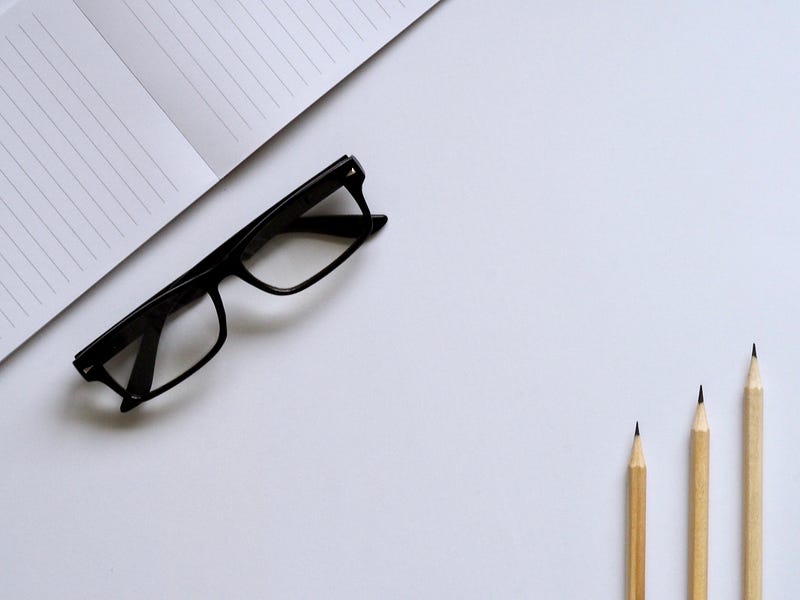Simple Is Often Better
Maybe we should even restate it by saying that simple is always better.

Simple.
The word itself is simple.
The opposite of complex, the opposite of making it so confusing that it requires three people to work on it. It is as simple as one element, one piece. Simple is elegant in its scarcity. When you say “wow, that was simple,” you say it with a smile. When you say “wow, that was complex” it is usually prefaced or closed with expletives.
Now, this is not a treatise against technology, even though technology is taking over. It is adding more complexity to our cars (e.g. self-driving vehicles) or that our appliances are now connected to the web and have browsers and screens built into them, enabled to determine where you are short on foodstuffs.
There are (lots of) times when you want simple. It is recognized that self-driving vehicles are required to be complex because of the daunting task for engineers and developers to consider all the failure modes of an autonomous 4,500-pound system hurtling down the road at 75-miles per hour.
Yet, there are times when a refrigerator should be just a refrigerator. Not a web browser. If you need a grocery list, you could *gasp* use a pencil and paper. Think in reduced fractions, whole numbers. When you write, make it simple. When you program, make it simple. When you design something, reduce it to its base elements, making it simple.

When we design items, there are systems that need not be included in the development as it provides a level of complexity that is often unneeded that can lead to failure.
For instance, developing a software interlock that requires an operator to input information and without this information, the next steps cannot be realized or completed. What is the simplest thing that can occur in that system? The operator will not have the details “required” and can no longer continue with the operation or transaction. This can lead to lost opportunities, lost customers, lost revenues, lost time.
When trying to solve a problem, why do we need to design an interface that is a “workaround” for the problem? Why not think more along the lines of Occam’s razor, thinking of solutions as being as simplistic as it can possibly be and just do away with the problem as it exists, rather than designing around it.
If a particular adhesive is required in a manufacturing process but is it so toxic that a complex solution is required to protect workers, would a simpler solution be to find or create a new adhesive with no outgassing or is non-toxic?
Or that a particular operation currently requires nine tools and the operator can rarely remember which tools to use in which sequence, possibly consolidating the tools into a much smaller subset, so that a single tool can be used, reducing complexity and making it simple?
Use estimations when possible, does the 3rd decimal place really matter in that annual throughput calculation or in that efficiency standard?
Can you use pictures instead of words?

Have you heard of “decision fatigue?”
Effectively it is the mental and physical drain that comes from making decisions when there are too many choices. It is the end of a long day where you have to make many decisions, you get home and your partner asks what you want for dinner and you lose it.
You do not care, you could be fed dog poop on a platter and you frankly do not care. As long as you do not have to make another decision that day, you are fine.
So to reduce or even eliminate that decision fatigue, you could easily start your day with the same clothes, or align your clothes each week so that you know you have to move from the left to the right through your closet as your week progresses.
No thinking, just grab the next hangars and go about your day. Steve Jobs did. So did Einstein. Carrie Donovan, Mark Zuckerberg, Michael Kors. Heck, even Simon Cowell does. So why do you need 44 pairs of pants, 64 shirts, 12 pairs of shoes and 23 pairs of socks? By the way, that is 777,216 combinations.
Do we need that many choices?
Make. It. Simple.
Why? Because we need your brain to do more important things.
Making things simple can lead to reduced stress (no more stressful decisions (like OMG, what socks do I wear?), more free time (what do you want to do? I dunno, what do you wanna do? ad infinitum), stronger ego and better self-esteem because there is no more second guessing (argh, did I make the right choice?!?) and generally a much easier, calmer, happier life.
Why NOT make it simple?
If you make simple the habit, then the habit can be repeated, allowing you to do it better and better every time. This, in turn, allows you to spend that excess brain power into doing things that are more important (no, not multi-tasking), like trying to figure out how to make it simple. Making things simple is not easy. It is often difficult, challenging, and usually frustrating. Simple is not a shortcut. But when you discover the simplest solution, the rewards are immense.
Simple can even be complex, depending on the solution. We need to stop trying to make things complex.
Go forth and be brilliant.
Comments
Post a Comment